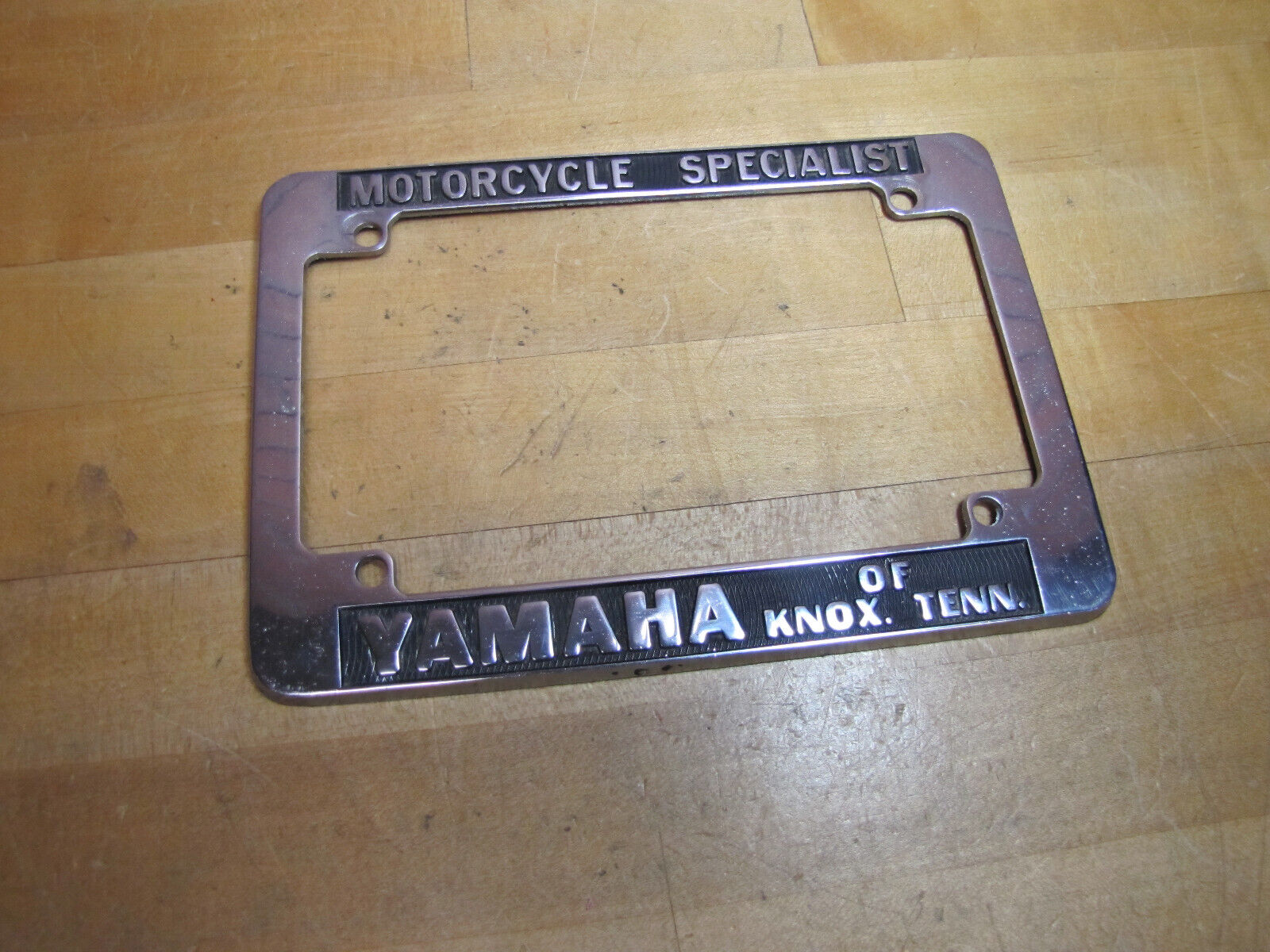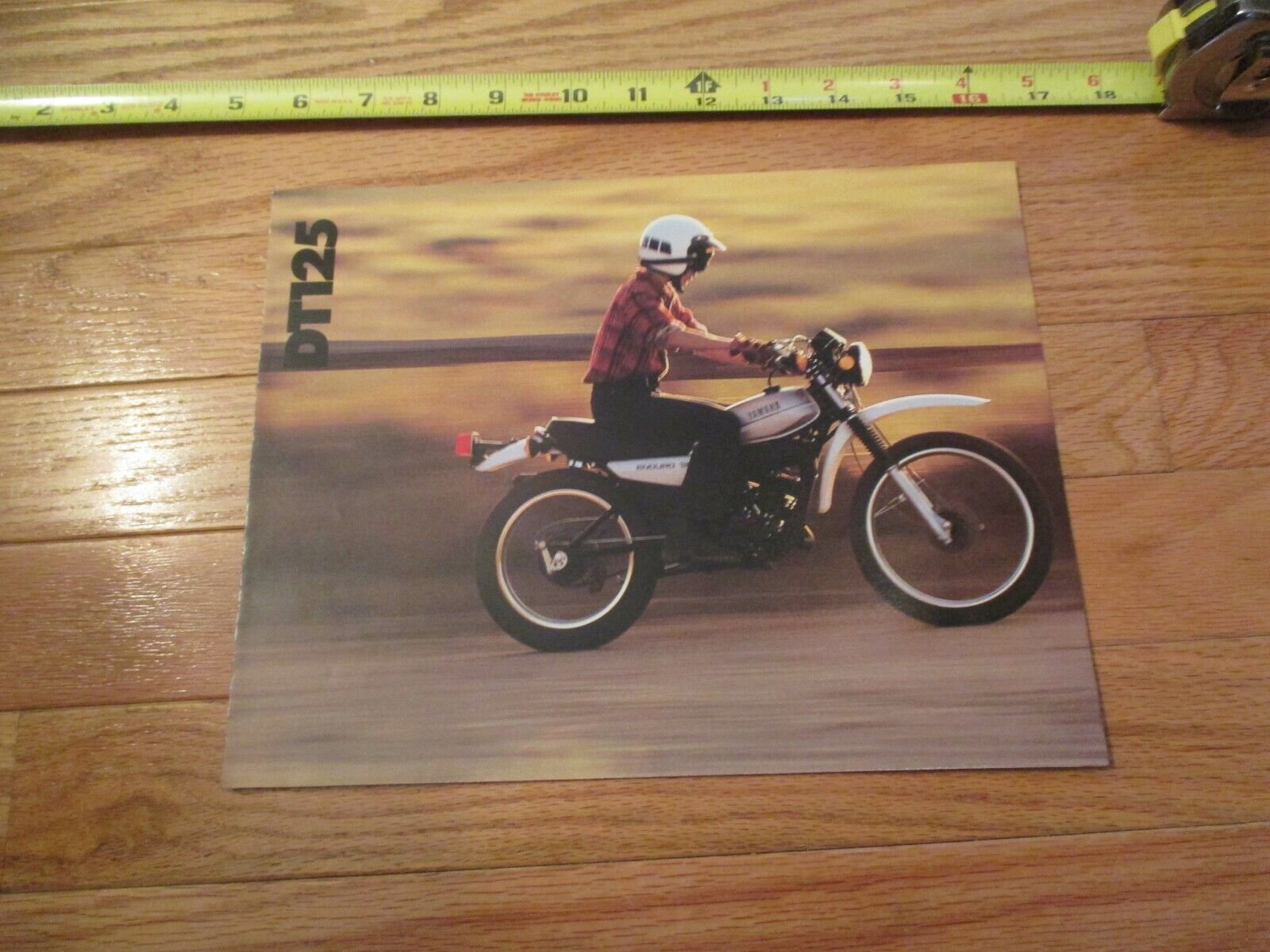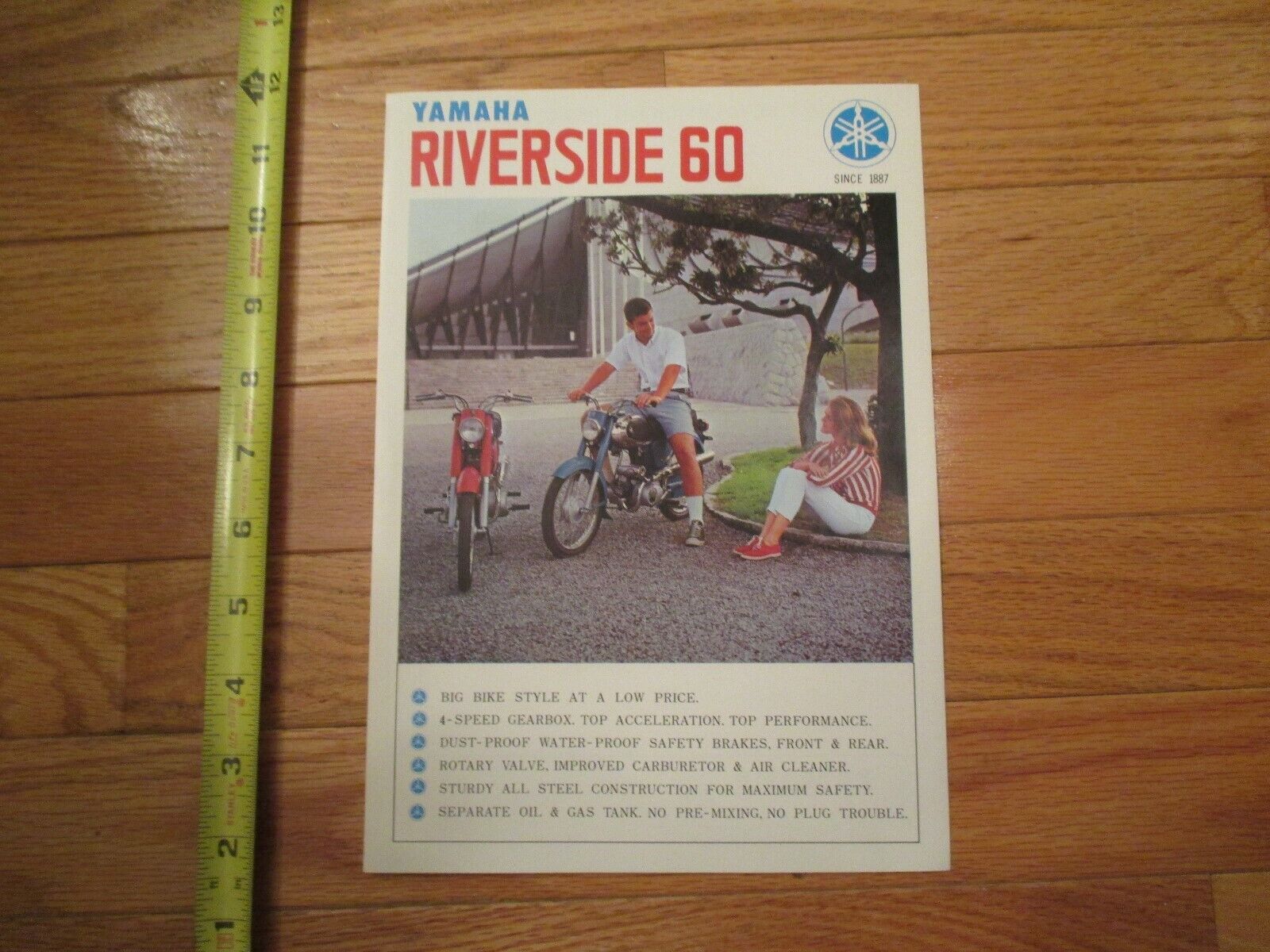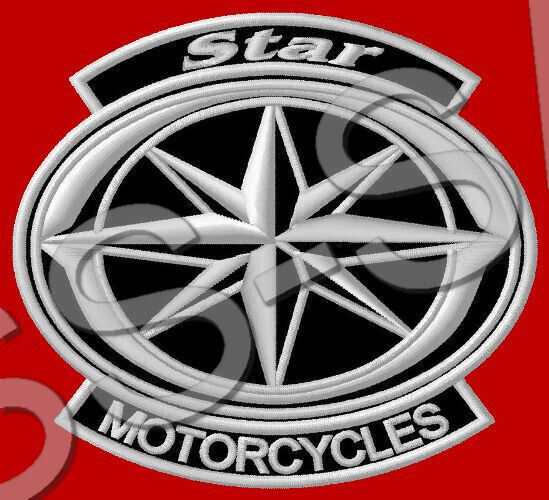-40%
1973 Yamaha RZ 201 Wankel - 2-Page Vintage Motorcycle Article
$ 7.04
- Description
- Size Guide
Description
1973 Yamaha RZ 201 Wankel - 2-Page Vintage Motorcycle ArticleOriginal, vintage magazine article
Page Size: Approx. 8" x 11" (21 cm x 28 cm) each page
Condition: Good
YAMAHA
RZ201
WANKEL
Twin Rotors. Water-Cooling.
Disc Brakes Front And Rear.
Is This Tomorrow’s
Superbike Today?
DIVERSITY OF engine design is a
sound marketing idea, as it allows
the consumer a wide choice of
machines with the opportunity to main-
tain brand loyalty. For 1973, Yamaha
has the edge. It not only produces
several two-strokes and three four-
stroke road burners, but has recently
built a revolutionary twin-rotor Wan-
kel-powered machine as well.
Patrons of the 19th Tokyo Motor
Show were the first to view the RZ 201,
as the new prototype is called. And, as
the accompanying photos suggest, it is
impossible to walk away unimpressed.
Unlike the Hercules Wankel CYCLE
WORLD previewed in the January ’71
issue, the RZ is of twin-rotor design
with axis of rotation at a right angle to
the direction of vehicle advance. This
effectively eliminates the sideways
torque reaction of machines with rotors
or crankshafts that revolve at right
angles to the direction of vehicle travel.
Besides lending itself well to chain
drive to the rear wheel, the Yamaha
approach enables the rotor chambers to
be placed above the transmission pack-
age. This creates a unit of more or less
conventional dimensions that is easily
installed in a frame. In fact, the tradi-
tionally tall engine bays of two or
four-stroke motorcycles need not be
altered at all.
Contrast this with the Hercules. If its
horizontal engine were a twin-rotor, the
engine/transmission package would be-
come too long to be practical.
For reasons of compactness, silence
of operation, and reliability, Yamaha’s
Wankel is water-cooled. Also in the
interest of reliability, Yamaha has in-
vented CCR or charge cooled rotor
lubrication. In this system, the fuel-air
mixture from the carburetor is further
mixed with oil for efficient cooling and
lubrication of the rotors.
Proper cooling and lubrication is
essential in a Wankel engine because the
seal velocity on the chamber walls is
rapid and temperatures on the portion
of the wall where combustion occurs are
much higher than in a conventional
internal combustion engine.
Although mixing of oil and gas
causes the Wankel to be an inherently
dirty engine in terms of air pollution,
the units respond better to air pollution
control devices than do conventional
engines. Wankel engines are not overly
fussy about fuel, and this may give them
the edge in future years.
In terms of air pollution, then, the
Wankel is not the ultimate answer, even
though it does have potential in this
area of concern. So why did Yamaha
choose a Wankel to power its latest
superbike. Aside from being different,
Wankel powerplants offer the four-
stroke attribute of compression braking
when the throttle is rolled off, they have
broad power bands and they are general-
ly smooth running.
Smoothness is inherent in the basic
design. Every Wankel converts a series
of separate combustion chamber explo-
sions into rotary motion. In the
Yamaha, there are two three-vaned ro-
tors housed inside two oblong (epitro-
choidal) chambers. Each rotor is sub-
jected to three Otto cycles (intake,
compression, combustion, exhaust) per
revolution as it travels an eccentric path
in the chamber.
The eccentric path introduces a cer-
tain vibration potential into the design,
but because each rotor only revolves
once for every three revolutions of the
output shaft and because the eccentric
path is small, vibration is minimal.
Besides, the rotors are easily counter- J
balanced.
j
One may conclude, then, that the i
68-bhp Yamaha will be both smooth
and a capable performer. It combines
the 59.4 in. wheelbase and girth of a
touring machine with the power poten-
tial and style of a stoplight-to-stoplight
GP bike. Add to this a five-speed trans-
mission, disc brakes at both ends and
electric starting, and you have a bike
with incredible consumer appeal.
You’ll not see this machine in 1973,
as Yamaha must first investigate its mar-
keting possibilities. When it comes, the
RZ should provide fascinating riding.
12661-7302-08









